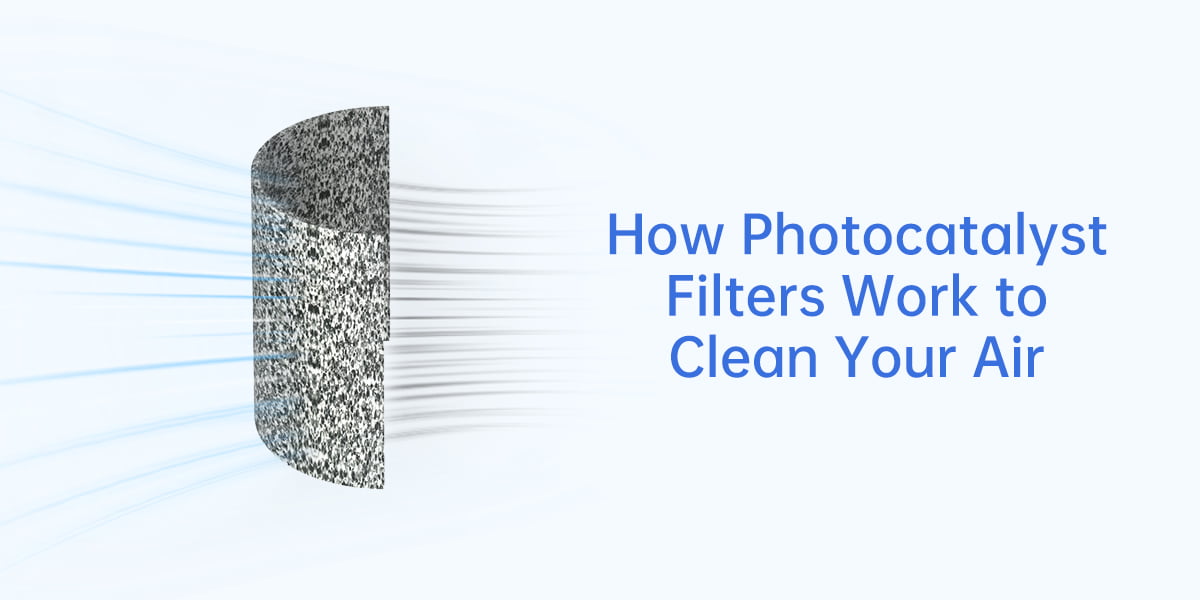How Photocatalyst Filters Work to Clean Your Air

Photocatalytic filters are a type of air filter that use a process called photocatalysis to clean the air.
This process involves the use of a photocatalyst material, typically titanium dioxide (TiO2), which is coated onto a filter surface. When the photocatalyst is exposed to light, it triggers a chemical reaction that breaks down harmful pollutants in the air.
The process works as follows:
The photocatalyst material is exposed to light, typically ultraviolet (UV) light, which activates the material.
When activated, the photocatalyst material produces highly reactive molecules called free radicals, such as hydroxyl radicals (OH•).
These free radicals react with pollutants in the air, such as volatile organic compounds (VOCs), nitrogen oxides (NOx), and bacteria and viruses, breaking them down into harmless molecules like water and carbon dioxide.
The clean air is then released back into the room.

Photocatalyst filters are effective at removing a wide range of pollutants from the air, including VOCs, NOx, and bacteria and viruses. They are also long-lasting and do not require replacement as frequently as other types of filters. Photocatalytic filters are often used in combination with other types of air filters, such as HEPA filters, to provide comprehensive air cleaning.
However, it's important to note that photocatalyst filters require UV light to activate the photocatalyst material, so they are typically used in air purifiers that have a built-in UV light source (or LED Light). Additionally, while photocatalyst filters are effective at breaking down pollutants, they do not physically remove them from the air, so they may not be as effective at removing larger particles like dust and pollen.



